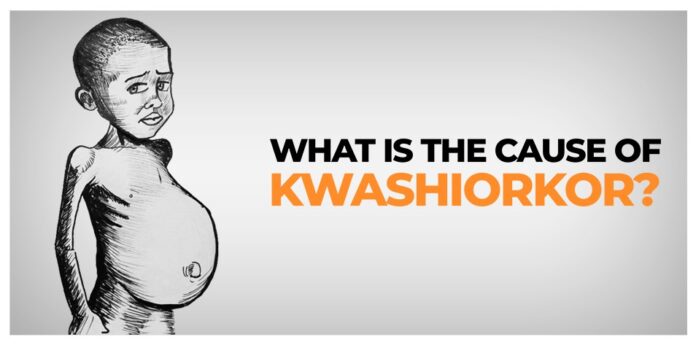Kwashiorkor is a severe form of malnutrition, primarily affecting children in developing countries where there is limited access to proper nutrition. Here’s an overview of its symptoms, causes, treatment, and prevention:
Symptoms:
- Edema (swelling), especially in the legs, feet, and face.
- Loss of appetite.
- Irritability and fatigue.
- Discoloration of hair (usually a reddish-orange hue).
- Skin lesions and changes in pigmentation.
- Failure to grow and develop at a normal rate.
- Enlarged liver and abdomen.
Causes:
- Inadequate protein intake: Kwashiorkor often occurs when a diet lacks sufficient protein, which is essential for growth and maintenance of body tissues.
- Poor diet quality: A diet high in carbohydrates but low in protein, vitamins, and minerals can contribute to the development of Kwashiorkor.
- Infectious diseases: Illnesses such as measles or diarrhea can exacerbate malnutrition and increase the risk of developing Kwashiorkor.
- Poverty and food insecurity: Families living in poverty may struggle to afford nutritious food, leading to malnutrition among children.
Treatment:
- Nutritional rehabilitation: Treatment typically involves gradually reintroducing a balanced diet rich in protein, vitamins, and minerals. Severely malnourished individuals may require therapeutic feeding with specialized nutrient-dense foods or therapeutic milk formulas.
- Medical care: Addressing any underlying infections or complications is crucial. This may involve antibiotics to treat infections and medications to manage symptoms like edema.
- Monitoring and support: Close monitoring of weight, growth, and nutritional status is essential during treatment. Nutritional counseling and support for caregivers are also important to ensure long-term recovery.
Prevention:
- Adequate nutrition: Providing children with a balanced diet that includes sufficient protein, vitamins, and minerals is essential for preventing Kwashiorkor.
- Breastfeeding: Exclusive breastfeeding for the first six months of life and continued breastfeeding alongside complementary foods up to two years of age or beyond can help prevent malnutrition.
- Access to clean water and sanitation: Preventing infectious diseases through access to clean water, sanitation facilities, and hygiene education can reduce the risk of malnutrition.
- Education and awareness: Promoting awareness about the importance of nutrition and providing education on proper feeding practices can empower caregivers to prevent malnutrition in children.
































